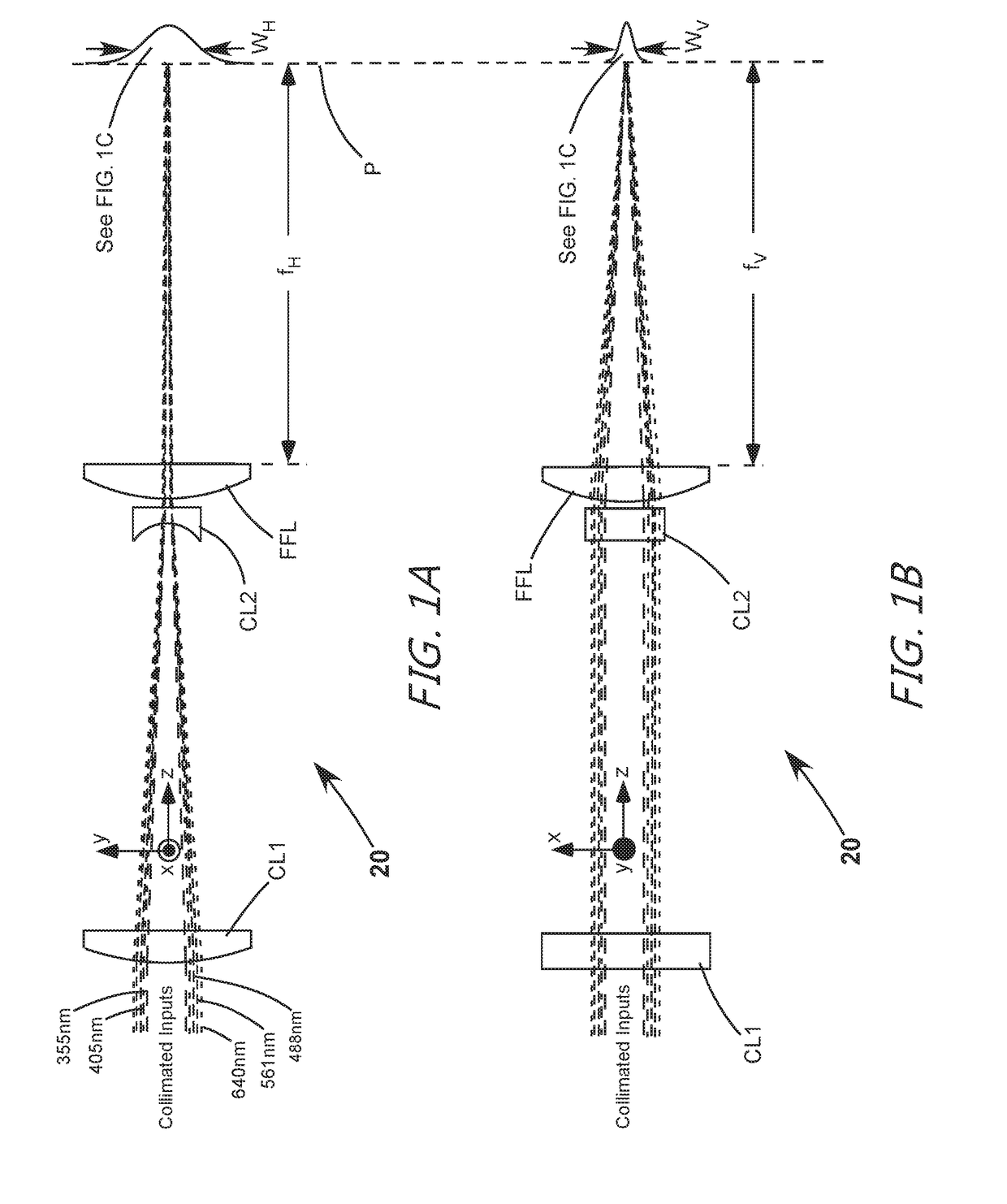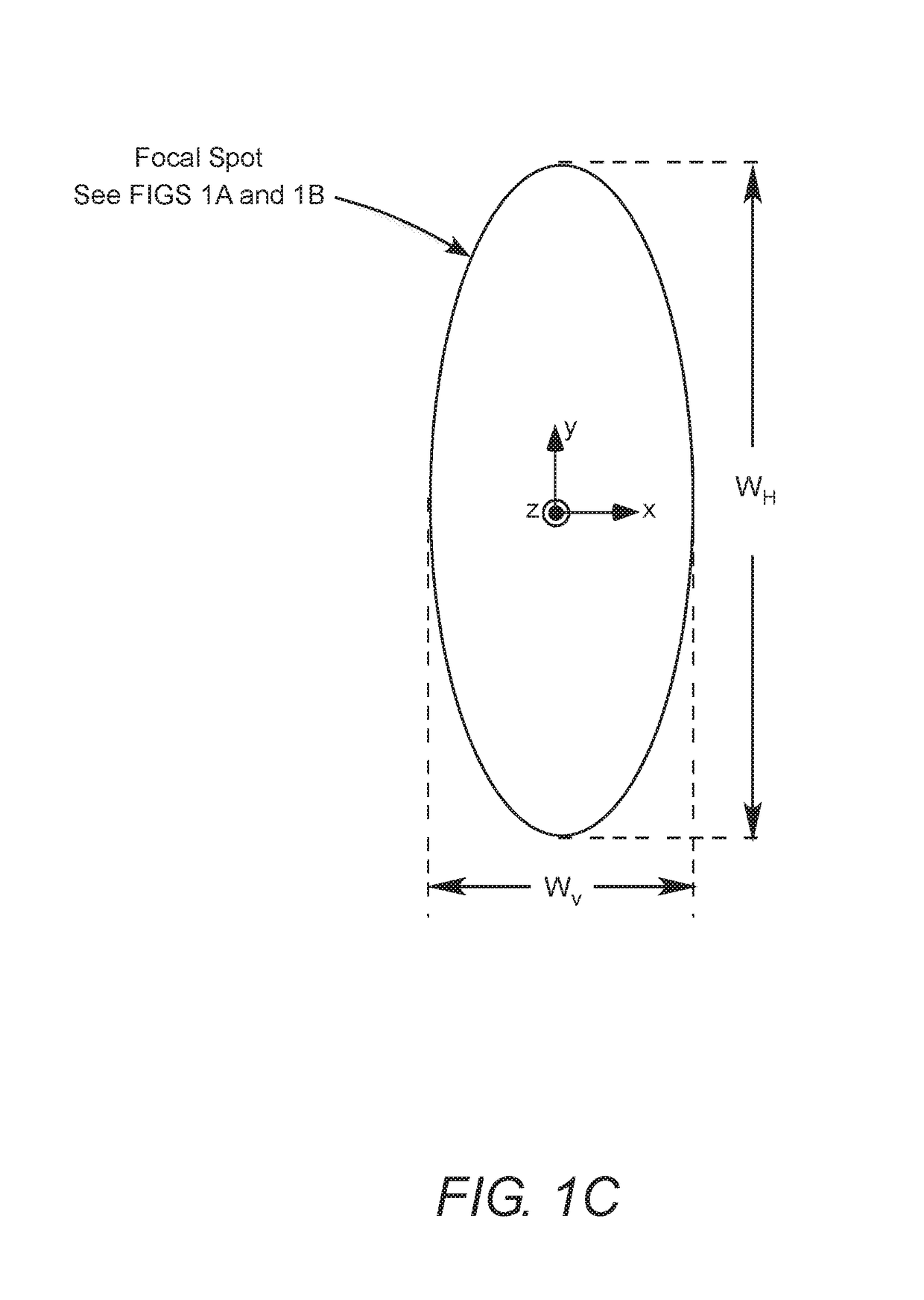Achromatic anastigmatic anamorphic objective
an anamorphic, objective technology, applied in the field of projection lenses, can solve the problems of reducing the number and range of wavelengths, affecting the focusing effect of wavelengths into the fluid stream, and requiring more complex and expensive objectives
- Summary
- Abstract
- Description
- Claims
- Application Information
AI Technical Summary
Benefits of technology
Problems solved by technology
Method used
Image
Examples
Embodiment Construction
[0021]Turning now to the drawings, FIGS. 1A and 1B schematically illustrate a preferred embodiment 20 of an achromatic anastigmatic anamorphic focusing objective in accordance with the present invention. FIG. 1A is a view designated arbitrarily as a “horizontal” view. This is a view in a y-z plane defined by arbitrarily assigned Cartesian optical axes x, y, and z, where z is the propagation-axis (propagation direction) of light through the lens. FIG. 1B is a view designated arbitrarily as a vertical view, i.e., perpendicular to the view of FIG. 1A, i.e., a view in an x-z plane defined by the Cartesian optical axes.
[0022]Objective 20 includes cylindrical lens elements CL1 and CL2, having optical power in only the y-axis. Elements CL1 and CL2 are followed in the propagation-axis by final focusing element FFL. Element FFL has equal optical power in both the x-axis and the y-axis and be referred to generally as a rotationally symmetrical element. A spherical optical element is preferred...
PUM
 Login to View More
Login to View More Abstract
Description
Claims
Application Information
 Login to View More
Login to View More - R&D
- Intellectual Property
- Life Sciences
- Materials
- Tech Scout
- Unparalleled Data Quality
- Higher Quality Content
- 60% Fewer Hallucinations
Browse by: Latest US Patents, China's latest patents, Technical Efficacy Thesaurus, Application Domain, Technology Topic, Popular Technical Reports.
© 2025 PatSnap. All rights reserved.Legal|Privacy policy|Modern Slavery Act Transparency Statement|Sitemap|About US| Contact US: help@patsnap.com



